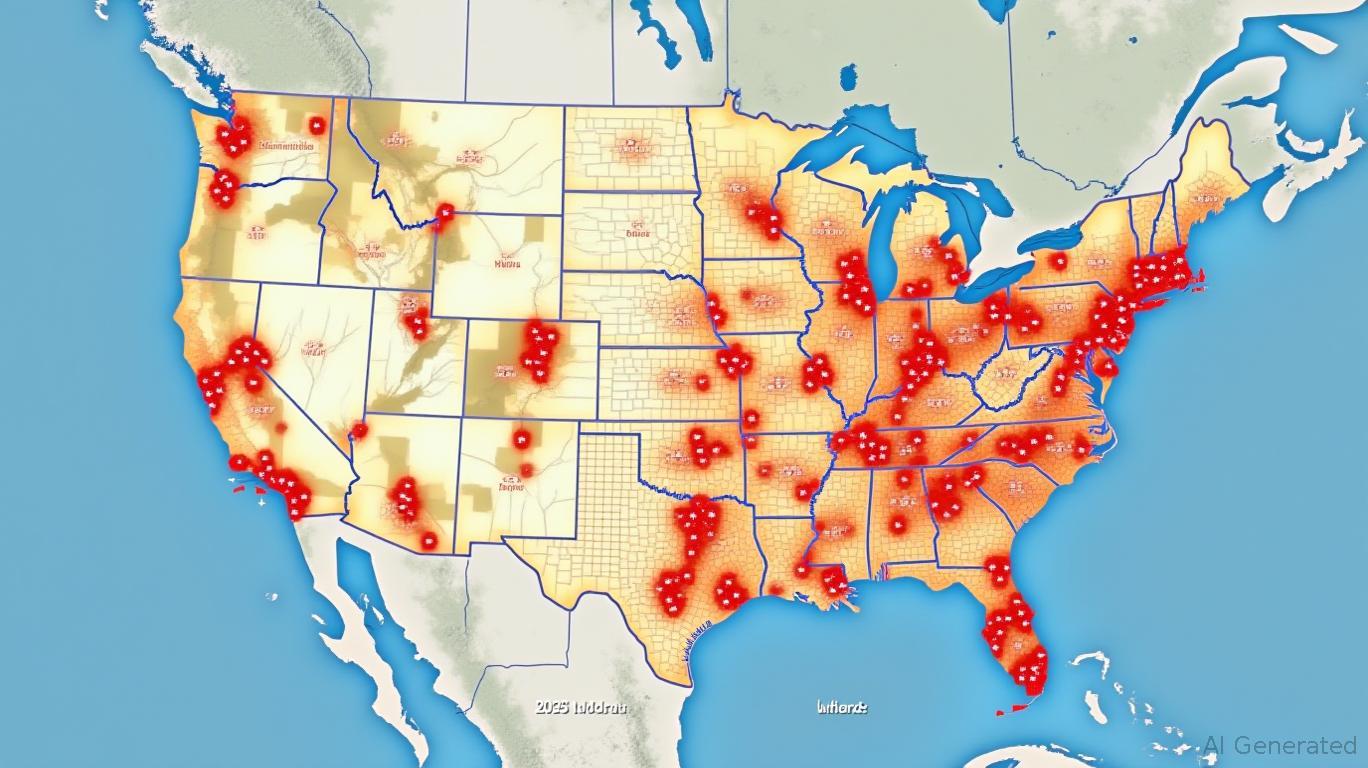Navigating the Cooling U.S. Housing Market: Where to Find Value Amid Shifting Dynamics
The U.S. housing market is undergoing a delicate transformation. As mortgage rates hover near 6.6%—a historically elevated level—buyers and sellers are recalibrating their strategies. For investors, this period of uncertainty presents a rare opportunity to identify undervalued assets and sectors poised to thrive as dynamics shift. Let's dissect the forces at play and uncover where the smart money is moving.
The Mortgage Rate Conundrum: Stability Amid Uncertainty
The 30-year fixed mortgage rate, averaging between 6.62% and 6.83% in June 2025, has shown remarkable resilience despite modest dips. Federal Reserve Chair Jerome Powell's emphasis on a “wait-and-see” stance on interest rates has kept borrowers on edge. While the 10-year Treasury yield's decline briefly eased rates, the Fed's reluctance to cut aggressively means affordability remains strained.
This stability, however, masks a deeper shift: rising inventory and slowing price growth are tilting the market toward buyers. For the first time in years, sellers must compete for buyers, a stark contrast to the frenzied bidding wars of 2021–2022.
Regional Disparities: The New Frontiers of Value
The housing market is fracturing into winners and losers. Coastal and tech-centric hubs like California and Colorado—once red-hot—face steep price corrections as remote work and rising costs deter newcomers. Meanwhile, midwestern and southern cities such as Kansas City, Nashville, and Charlotte are emerging as bargain destinations.

Investors should prioritize regions with:
1. Stable job markets (e.g., healthcare, logistics hubs).
2. Inventory growth without overbuilding.
3. Price-to-rent ratios below 20-year averages (a sign of undervaluation).
For example, cities like Cincinnati or Tampa offer single-family homes at 15–20% below their 2022 peaks, while rents remain steady. These areas could see capital appreciation as buyers seek affordability without sacrificing quality of life.
Homebuilder Stocks: A Buyer's Market for Equity Investors
The homebuilding sector has been battered by rising costs and overstocked land inventories. Yet, this turmoil has created a sieve to identify resilient companies with strong balance sheets.
Focus on builders with:
- Debt-to-equity ratios below 1.5x.
- Exposure to affordable housing tiers (e.g., PulteGroup's entry-level subdivisions).
- Strategic land hoarding in undervalued regions.
Avoid over-leveraged firms or those reliant on luxury markets. Instead, consider names like Lennar (LEN), which has aggressively reduced pricing while maintaining margins through cost-cutting.
The First-Time Buyer Catalyst: A Silver Lining
While high rates deter many, first-time buyers—often younger, tech-savvy, and open to suburban/exurban areas—are driving demand in overlooked markets. Their influence is amplified by FHA loan limits ($726,525 in high-cost areas) and down payment assistance programs, making $250,000–$350,000 homes accessible in mid-tier regions.
Investors can capitalize by:
- Targeting REITs like American Homes 4 Rent (AMH), which focuses on single-family rentals in Sun Belt cities.
- Shorting overvalued luxury homebuilders betting on a return to irrational exuberance.
Fed Policy: The X-Factor for Rates—and Markets
Fannie Mae's projection of a 6.1% mortgage rate by year-end hinges on inflation cooling to 2–2.5% and the labor market softening. Should the Fed pivot to rate cuts—a possibility if the debt ceiling crisis eases—mortgage rates could drop to 5.8% by 2026, reigniting demand.
Investors should monitor:
- Inflation data (PCE and CPI reports).
- Unemployment claims as a labor market health indicator.
- 10-year Treasury yields—their trajectory is a leading indicator for mortgage rates.
Actionable Investment Strategies
- Buy regional ETFs: Consider the SPDR S&P Regional Banking ETF (KRE) for exposure to banks in growth markets.
- Short overvalued homebuilders: Avoid names with heavy luxury exposure or high debt.
- Dollar-cost average into homebuilder ETFs: The iShares U.S. Home Construction ETF (ITB) offers diversified exposure to recoveries.
- Physical real estate: Partner with local agents to identify off-market deals in undervalued regions.
Conclusion
The U.S. housing market's cooling phase is far from a crisis—it's a recalibration. By focusing on resilient regions, financially disciplined builders, and the rising tide of first-time buyers, investors can position themselves to capture gains as the market rebalances. The key? Look beyond the national averages and dig into the microtrends. The next boom won't be uniform—it'll be selective, and the early birds will own it.

Comments
No comments yet